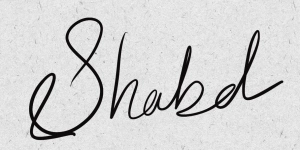“Seven Samurai” and the frames
Akira Kurosawa’s Seven Samurai is an epic film of 1954. Seven Samurai is a war film with almost last 60 minutes of reel depicting war between the bandits and the seven samurais, along with the well trained villagers. It is a movie much talked about, much appreciated and much acclaimed. The movie in black and white is a colorful screening of camera angles and shot. Every frame in the film has its own charm, its own take in film making. The cinematography is spell-bounding. The first scene is a beautiful black and white amalgamation of clouds on the sky, the camera angle being placed low to provide a wider view of the bandits on the galloping horses. The scene marks the war story of the film with the arrival of the bandits in the first scene.
A wide view with extreme long angle shots of a small village set on a low hill is captured through and then a medium close-up shot of dried twigs and within it pops an old man with a bunch of dried twigs loaded on his back. The shot captures the fear and trauma of the old man eavesdropping the conspiracy to be executed by the bandits.. The camera mounted in the same angle, records the old man turning around and running towards the village, as he runs he diminishes into a smaller and smaller form. The next shot is again a wide angle view of the villagers sitting on the ground with each head shrunk underneath. Then a waist shot of a woman with her kids holding her robe from behind. The magnificent frame work is of multiple waist length shots of people in a frame, which equally captures the emotions of every character in the scene. Along with cinematography the film excels in editing as well. The links in the story and the characters are well connected through editing to keep the synchronization of the film alive. Every camera angle in the film is a storytelling in itself. Love is portrait on screen by a frame length meadow covered with flowers. Of course the flowers come out white on screen but with the abundance of it shown, rightly evokes love. The scene which captures villagers’ meeting with the old man is a brilliant medium close-up shot. The old man carries a stern face through out, where as the other three in the frame, a middle-aged man and a young woman behind holding her restless child shows extreme fear and terror on screen. The scene for the search of samurai(s) on the market place is like a rally of passerby backed up by close-up of few deputed village men in search of the samurai(s).
A wide angle shot where the villagers disperse by a samurai’s invoke towards a villager is equally exceptional. It introduces a quick peep into the physical power the samurais showcase in the future warfare.
The film is a beautiful amalgamation of varied emotions on screen. Emotions of love, fear, terror, desperateness, helplessness, extreme power, mindfulness and pride all captured by the eloquent frames of the camera and angles. The film is a masterpiece and a milestone in film making.
Work cited:
Kurosawa, Akira (Director).Seven Samurai (Film). 1954. Toho. Media.
Wikipedia contributors. “Seven Samurai.” Wikipedia, The Free Encyclopedia. Wikipedia, The Free Encyclopedia, 27 Oct. 2021. Web. 5 Nov. 2021.
Recent Post
Post Category
Archive
Shabd
It is a platform for poets and writers to share their talent with the world. Shabd provides space to poems, stories, articles, shayaris, and research articles. If you want to post, please log in first; after that, you will see the 'User Submitted Post' icon in the header, which you can click to submit your post.
